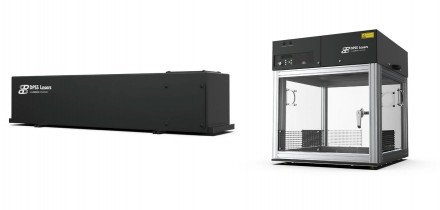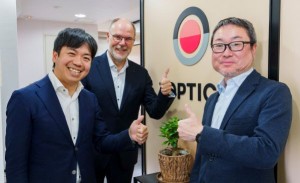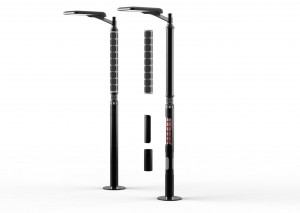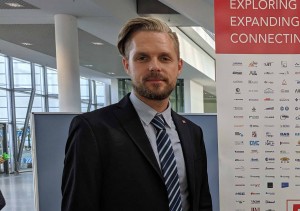
Class 5 Photonics offers the most powerful femtosecond lasers on the market, pushing lasers to extreme wavelengths at extreme average power. The company positions itself as experts in ultrafast with 10 years of experience in high power lasers, extreme ultraviolet (XUV) physics and high-field Terahertz generation. Their products have won various awards, such as the SPIE PRISM Award. Their flagship product family Supernova OPCPA, covers pulse durations down to 15 fs, wavelength regimes from 0.4 – 3.0 µm, and industry-leading average power beyond 100 W. Based on modular optical parametric chirped-pulse amplifier (OPCPA) design they reduce footprint and complexity while achieving maximum long-term stability at an affordable price. EPIC's Jose Pozo has a chance to interview Class 5 Photonic's CEO, Dr. Robert Riedel.
Early research
Driven by a passion for light and lasers from his early years, in 2010, Robert went to Friedrich Schiller University in Jena to study a degree in Physics.
Shortly after graduating, he visited a junior research group at DESY in Hamburg who were developing an ultra-fast prototype laser system. This system had every ultra-fast component imaginable and, having developed a fascination for ultra-fast lasers, Robert decided to the spend the next 3 years on a PhD course at Hamburg University so he could contribute to the development of the group’s prototype laser system.
His research focussed on extreme UV and X-ray free electron laser pulse characterization, and the aim of improving the stability of high-power short pulse lasers, making the technology sufficiently compact to be incorporated into the user facility of a free-electron laser.
During his research, Robert and his colleagues received increasing attention from the research community, especially from researchers in the field of molecular physics and attosecond sciences.
The technology they were working on was based on Optical Parametric Chirped-pulse Amplification (OPCPA), which compared to conventional lasers, enabled much shorter pulse durations and a greater range of wavelengths at much higher laser power. These features were very attractive for researchers because they allowed custom multi-colour experiments at highest average power and unprecedented long-term stability in areas such as attosecond science, bio-imaging and ultrafast spectroscopy.
Launching Class 5 Photonics
It quickly became clear that a company would be viable, if they could make the technology into a usable product. The aim would be to change the way scientists work by providing them with very high-spec, stable laser systems that would allow measurements that hitherto had been impossible. After talking to potential customers, they decided to take the plunge and set up Class 5 Photonics with Robert and his colleague Michael Schulz as managing partners.
Setting up the company was more of a process than an event. It started with a visit to the start-up office on the research campus to get advice on patents, writing business plans and how to obtain seed funding that would give them the 12 months they needed to develop a product prototype.
For Robert, this most difficult part of the process was learning how to communicate their technology to non-physicists and investors. As he recalls: “The first pitch I gave to an investor was basically a scientific talk and was a complete disaster. Investors don't care how a laser works, they are only interested in how much it costs and what problems it can solve”.
Robert quickly realised that he would have to use a communicative approach that focused less on the technology and more on the cost-effective way the technology could solve specific problems.
Company growth
Over the last 5 years, Class 5 Photonics have grown from 2 to 11 employees with a current turnover of around €3m. Robert puts the company’s success down to the following factors:
Unique selling propositions
Class 5 Photonics has three main unique selling propositions (USPs): First, their OPCPA technology provides the highest average power systems currently available and they have mastered the toolbox of ultrafast lasers to provide very stable solutions for highly demanding applications. Second, they have developed the technique of white light generation directly from femtosecond lasers that obviates the need for complicated oscillators, which makes their systems extremely compact. Third, their optical parametric amplification techniques allow for femtosecond pulses in a broad wavelength range from ultraviolet to mid-infrared. The technique creates almost no absorption in the amplifier crystals, which minimises thermal management problems irrespective of the amount of power pumped into it.
Their main OPCPA products are the “White Dwarf OPCPA” and the “Supernova OPCPA”. The White Dwarf is a complete white-light seeded femtosecond laser on a footprint of just 80x80 cm² - a real dwarf in size, given the average power of 5 W. The system targets bio-imaging and advanced spectroscopy applications. New versions, with gap-less tunability from 230 – 1300 nm or CEP stability are currently being launched. The Supernova is the flagship product of the company. Focused on energy- and repetition rate-hungry applications in attosecond and molecular physics, it delivers up to 100 W average power with millijoule pulse energies and few-cycle pulse durations, covering spectral ranges from 400 nm – 3000 nm. One major goal of the company is to push laser technology to “extreme power at extreme wavelengths”. So, it is no surprise that their new product “White Dwarf HE OPCPA” can be equipped with their new mid-infrared source, delivering 8 µm at 2 W average power and 100 fs pulse duration, or their newly launched XUV high-harmonic generation source.
Collaboration
Collaboration has played a big part in the company’s success. From the start, they knew they had game-changing technology and started collaborations with university research departments and laser vendors in the market. They wanted to be the best at being fast and to build a network and, unlike many start-ups, were willing to share their ideas with potential partners, suppliers and customers. By adopting an open, communicative approach they were able to get their technology out into the ecosystem and increase the company’s visibility.
A team approach
In the beginning, forming a team was unproblematic. They were a small, tightly knit research group with a large budget and shared passion for ultra-fast lasers and a shared mission for wanting to change the way scientists worked. They began to work as an efficient research team rather than as a company and have since managed to keep the spirit of the early days: “When we hire someone new, we look for three things: a background in ultra-fast; a clear motivation to contribute to our mission, at least one set of skills that we don't have, a personality that complements the team and someone who’s fun to work with”
A solutions approach
From the outset, Class 5 focused solely on solving ultrafast problems with high power laser technology. This has required technological flexibility and a multi-skilled team, which has grown to include not only of laser developers, but also experts in attosecond science, terahertz generation and ultra-fast spectroscopy. “Our passion and expertise for ultrafast research really makes the difference”, so Robert says.
Awards
Class 5 Photonics has won several awards: the OptecNet Photonics Award (Start Up Challenge) in 2014, and the SPIE Prism Awards for lasers and Laser Focus World innovators gold award in 2018. Apart from an acknowledgment of the Class 5’s impact on the laser community, these awards have been a great motivator for the team, increased the company’s visibility and served as a valuable marketing push.
The future
Class 5 Photonics has one clear vision: to change industry and to provide ground breaking technology to enable researchers to push new limits. They will continue to adapt quickly to their customers’ needs and Roberts sees opportunities in the following areas:
Laser driven XUV: There has been tremendous development in laser driven XUV research, but it is not yet used in industry. Robert sees great potential in this area particularly in process monitoring for semiconductors and Class 5 is currently working with research institutes on projects that have the potential for industrial applications.
Microscopy: Multi-photon microscopy is clearly another area of opportunity. However, the challenge is that there are currently very few microscope companies that can benefit from the very high-power systems that Class 5 provides. The problem is that high power lasers destroy human tissue so very advanced solutions are required, for example multiplexing the beam in order to measure large volumes.
Materialsprocessing: Another area of opportunity is materials processing of semiconductors that require, for example, tunable ultrashort pulses at specific infrared wavelengths. But progress in this field is likely to be slow as the laser manufacturing community is still quite conservative and their tool box, which is the Yb-doped lasers, already has a complex parameter space.
Data storage: Recently, there has been an interest in the use of femtosecond lasers for data storage. However, in Robert’s view, the tools currently used i.e., ultrafast direct fibre laser outputs are exactly the right tools required for this field and adding an OPCPA system would add unnecessary complexity.
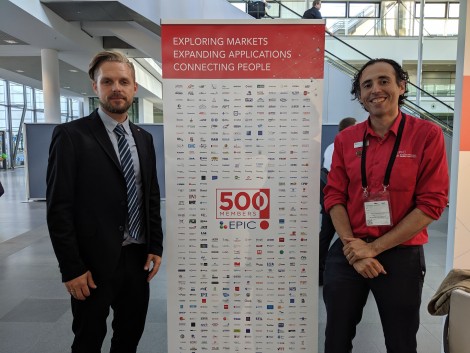
If you could start again, what would you do differently?
“When we started out, I thought that maybe I wasn’t focusing enough on what I would like my role to be. While we hired someone to manage the organization at an early stage, I think I should have hired an assistant earlier to stop me being so distracted by all the routine tasks that needed to be done. Secondly, when things were slow, we should have spent our time more productively on marketing activities such as visiting customers and going to conferences”.
What are your words of wisdom to future entrepreneurs?
“First, don’t be afraid; if you fail, you’ll still have learnt many things in many different fields. Of course, you have to be careful and consider all the risks but try to build your world around opportunities rather than fear”.
“Second, don’t work on your ideas in isolation. You can only find out if your idea is viable by bouncing it off other people in the field. There are many people out there who have been on the same journey and they can help you. Go to meetings and conferences such as the ones organised by EPIC and be open to advice.
Written by Jose Pozo, Director of Technology and Innovation at EPIC (European Photonics Industry Consortium)









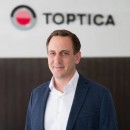
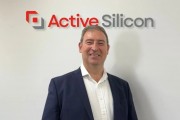


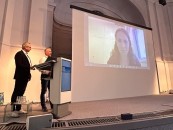

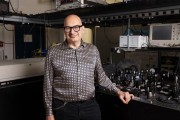
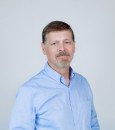


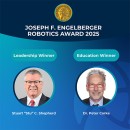
















 Back to Features
Back to Features










